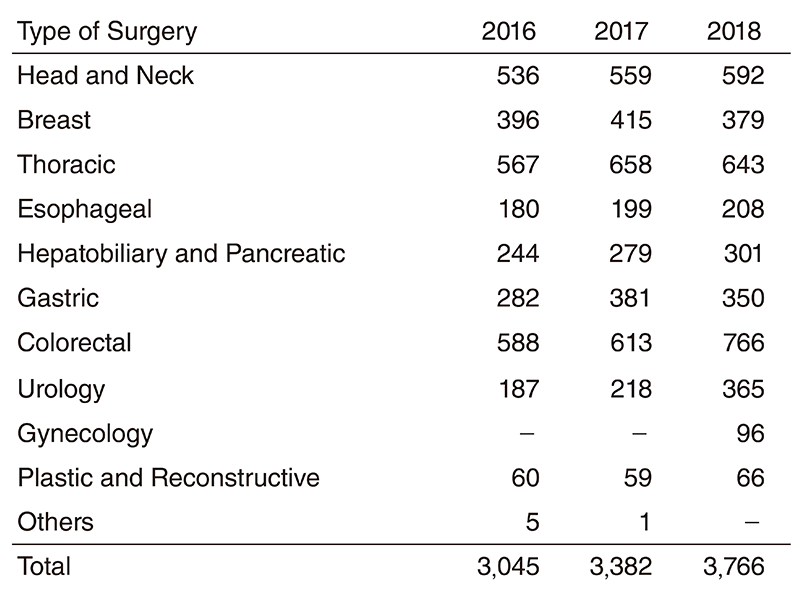Annual Report 2018
Department of Anesthesiology
Hiroyuki Yamamoto, Manabu Hashimoto, Aiko Ohshita, Reiko Sato, Kazuaki Hiraga
Introduction
In 2017 the Center for Developing Nextgeneration Endoscopic-surgical Treatment (NEXT) was completed to expand surgical and endoscopic activities. The operating theater has moved to the fourth floor in the NEXT building, which has twelve operating rooms and is designed for laparoscopic, thoracoscopic and other minimal invasive surgeries. The intensive care unit (ICU) has also moved to the third floor. Postoperative patients can be transferred from the operating theater by elevator directly to the ICU. Recently, complex procedures are increasing on more seriously ill patients with coronary disease, chronic obstructive pulmonary disease (COPD), neurological disorders and so on. In post-anesthesia care for such patients the ICU plays an important role. Therefore, we manage the operating theater in close cooperation with the Department of Intensive Care Medicine. The goals of the Department of Anesthesiology are to provide anesthetic care to patients, with their safety being the highest priority.
The Team and What We Do
The Department of Anesthesiology consists of five staff members (four Fellows of JSA and a JSA Board Certified Anesthesiologist) including a new staff who joined us this year. We perform clinical work with two or three rotating residents and 15 part-time anesthesiologists. In addition, anesthesia residents who belong to the anesthesia resident program of Teikyo University started to rotate to our department. A pre-anesthesia case presentation is held every morning to examine the cases of the day and discuss the anesthesia problem and strategy for patients with various complications. In the old operating theater which had eight operating rooms, more than 3,000 surgeries were performed each year (Table 1). With the increase in the number of the operating rooms, annual operation volume reached 3,700 this year. A large number of operations in the head and neck surgery division and procedures involving thoracotomy for lung and esophageal cancer surgeries are one of the features of this hospital. Accordingly, a special anesthesia induction method for difficult airways and the one-lung ventilation technique for thoracotomy are often necessary.

Education
Our Department has no resident. For rotating residents from other surgical divisions, we provide opportunities of epidural anesthesia, one-lung ventilation technique for thoracotomy, and difficult airway management including fiberoptic intubation. We are convinced that this experience is useful for the management of postoperative patients in the ward or ICU. A Journal Club is also held once a week in addition to the everyday morning conference. We support residents who hope to obtain the qualification of Registered Anesthesiologist or JSA Qualified Anesthesiologist during rotation periods.
Future prospects
In FY2018 we performed over 3,700 surgeries. We have run eight operating rooms for anesthesia services since last year and are planning to increase this to nine rooms. Next year, we aim to manage nine operating rooms two or three days a week and perform more than 4,000 surgeries.
